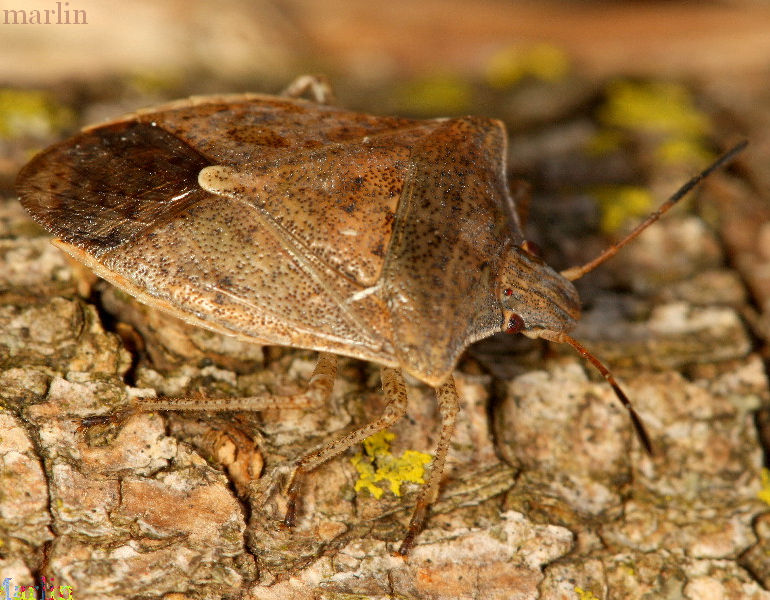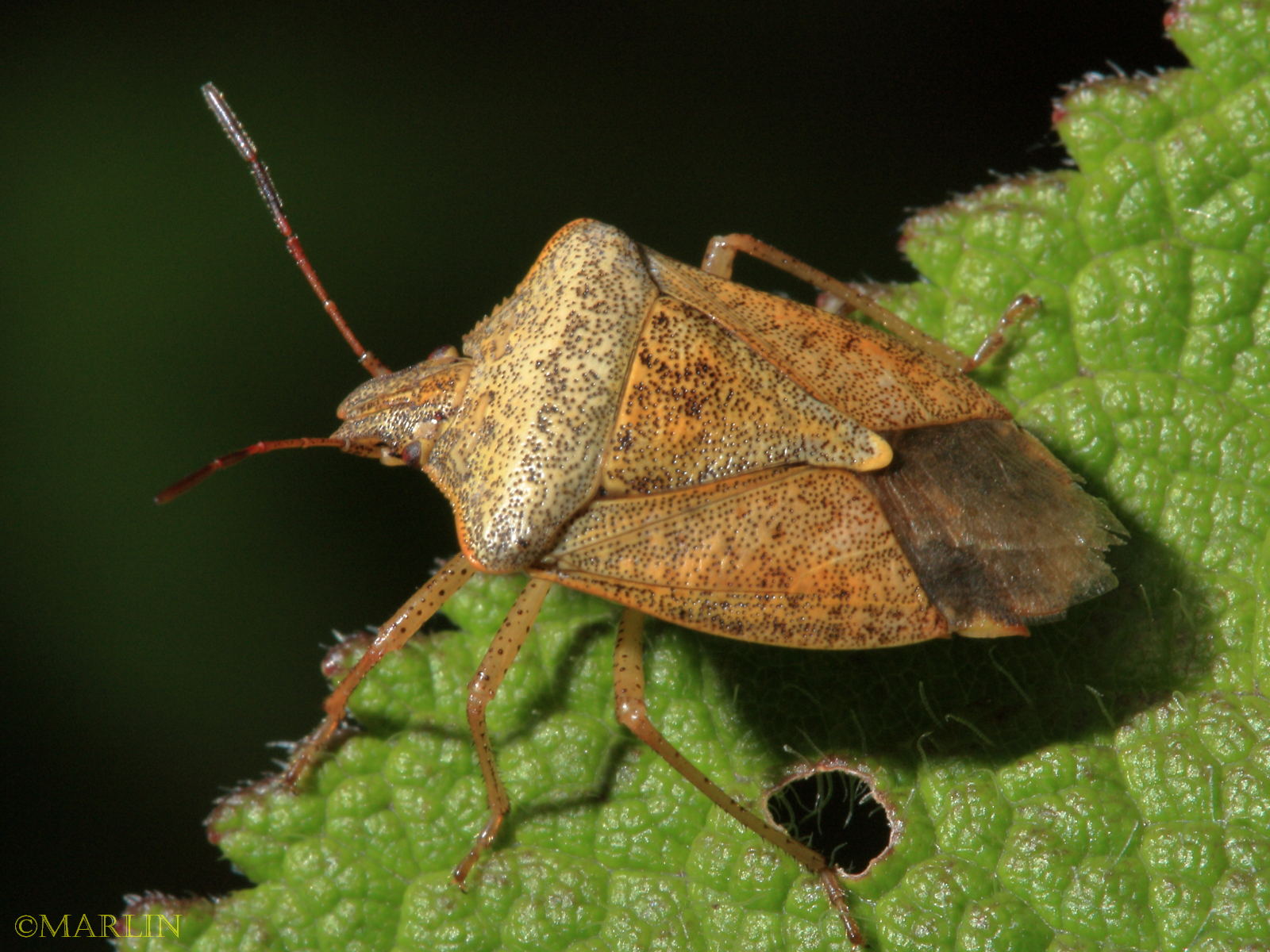Brown Stinkbug – Euschistus servus
The family name, Pentatomidae, comes from the Greek “pente” (five) + “tomos” (a section); perhaps a reference to the 5-segmented antennae, or perhaps a reference to the body, which when viewed from above appears to be divided into 5 large sections. The scutellum is the largest section.
Stink bugs deposit their eggs on the underside of leaves in clusters with tight rows of individual barrel-shaped eggs. After overwintering, adult females seek out suitable hosts in early spring and deposit their eggs on host plants. Often these overwintering populations are found along field borders, particularly along tree lines near their overwintering sites.

Stink bug eggs on underside of maple tree leaf. Each egg is just 1mm in diameter (about .04 inch)
Stink bugs feed on many varieties of plants, including native and ornamental trees, shrubs, vines, weeds, and many cultivated crops. Stink bugs inflict mechanical injury to the seed as well as transmit the yeast-spot disease organism. The degree of damage caused by this pest depends to some extent on the developmental stage of the seed when it is pierced by the stink bug’s needlelike mouthparts. The younger the seed when damaged, the greater the yield reduction. [2]


Early Spring (March 22) brown stinkbug, near Chicago
Stink bugs get their common name from the foul-smelling fluids they exude when disturbed. Both adults and nymphs have large glands that discharge underneath the body. Stinkbugs are shy, I can tell you – and they will fly off very quickly if you get in their face.
Late season stink bug, very active in mid-October
Family Pentatomidae (Stink Bugs)
Bugs Main | Bugs Index | Assassin Bugs | Plant Bugs | Ambush Bugs

